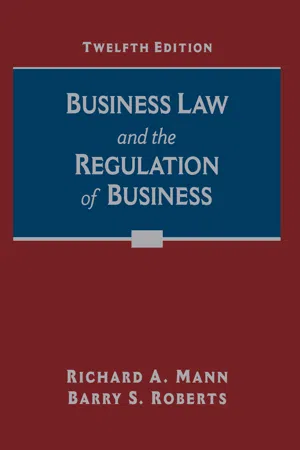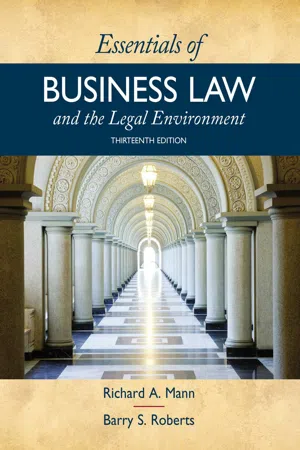Law
American Civil Law
American Civil Law refers to the body of laws that govern private disputes between individuals and organizations, as opposed to criminal matters. It encompasses areas such as contracts, property, torts, and family law. Civil law cases are typically resolved through monetary compensation or court orders to perform or refrain from certain actions, rather than through criminal penalties.
Written by Perlego with AI-assistance
3 Key excerpts on "American Civil Law"
- James Walsh(Author)
- 2002(Publication Date)
- Auerbach Publications(Publisher)
429 15 The Civil Law DEFINITION Civil law in the United States is that vast body of statutory and common law that deals with private rights and remedies. Although the state may be a party in civil law matters, the principal impact is to establish and adjudicate rights as between or among private persons, both natural and corporate. The term “civil law,” as used in the United States (and in other common-law countries), has a somewhat different meaning than when it is used elsewhere, primarily in Europe. Civil law in Europe generally refers to the organized sys-tem of codified law which began with the Roman Empire under Justinian and continued under his successors. This body of law, more correctly referred to as the “civil code,” is in many ways quite different from Anglo-American common law and includes both penal or criminal elements, as well as noncriminal. In the United States, the state of Louisiana retains a large portion of the French civil code — a heritage from the period when it was a French possession. Similarly, the Commonwealth of Puerto Rico incorporates some aspects of the Spanish civil code in its local law. The remainder of the discussion on civil law will deal with civil law as it is known in the United States. In any special context in which the European civil codes are meant, they will be so identified. MAJOR BRANCHES The distinction made in the preceding chapter between statutory and common or case law must be kept in mind. The asset protection professional will find large areas of responsibilities governed by statutory provisions, both federal and state, and will also find that, on a daily basis, decisions and actions are affected in a major way by the civil common law, especially the civil law of torts.- eBook - PDF
- Richard A. Mann; Barry S. Roberts, Richard Mann, Barry Roberts(Authors)
- 2016(Publication Date)
- Cengage Learning EMEA(Publisher)
P ART II T H E L E G A L E N V I R O N M E N T O F B U S I N E S S CISG C HAPTER 3 Civil Dispute Resolution C HAPTER 4 Constitutional Law C HAPTER 5 Administrative Law C HAPTER 6 Criminal Law C HAPTER 7 Intentional Torts C HAPTER 8 Negligence and Strict Liability Copyright 2017 Cengage Learning. All Rights Reserved. May not be copied, scanned, or duplicated, in whole or in part. Due to electronic rights, some third party content may be suppressed from the eBook and/or eChapter(s). Editorial review has deemed that any suppressed content does not materially affect the overall learning experience. Cengage Learning reserves the right to remove additional content at any time if subsequent rights restrictions require it. C H A P T E R 3 C IVIL D ISPUTE R ESOLUTION Laws are a dead letter without courts to expound and define their true meaning and operation. A LEXANDER H AMILTON , T HE F EDERALIST (1787) C H A P T E R O U T C O M E S After reading and studying this chapter, you should be able to: 1. List and describe the courts in the federal court system and in a typical state court system. 2. Distinguish among exclusive federal jurisdiction, concurrent federal jurisdiction, and exclusive state jurisdiction. 3. Distinguish among (a) subject matter jurisdiction and jurisdiction over the parties and (b) the three types of jurisdiction over the parties. 4. List and explain the various stages of a civil proceeding. 5. Compare and contrast litigation, arbitration, conciliation, and mediation. A s discussed in Chapter 1, substantive law sets forth the rights and duties of individuals and other legal entities, whereas procedural law determines how these rights are asserted. Procedural law attempts to accomplish two competing objectives: (1) to be fair and impartial and (2) to operate effi-ciently. The judicial process in the United States repre-sents a balance between these two objectives as well as a commitment to the adversary system. - Richard Mann, Barry Roberts(Authors)
- 2018(Publication Date)
- Cengage Learning EMEA(Publisher)
C HAPTER 3 Civil Dispute Resolution 44 C HAPTER 4 Constitutional Law 68 C HAPTER 5 Administrative Law 88 C HAPTER 6 Criminal Law 104 C HAPTER 7 Intentional Torts 121 C HAPTER 8 Negligence and Strict Liability 139 The Legal Environment of Business PA RT I I Copyright 2019 Cengage Learning. All Rights Reserved. May not be copied, scanned, or duplicated, in whole or in part. Due to electronic rights, some third party content may be suppressed from the eBook and/or eChapter(s). Editorial review has deemed that any suppressed content does not materially affect the overall learning experience. Cengage Learning reserves the right to remove additional content at any time if subsequent rights restrictions require it. 44 C H A P T E R O U T C O M E S After reading and studying this chapter, you should be able to: 1. List and describe the courts in the federal court system and in a typical state court system. 2. Distinguish among exclusive federal jurisdiction, concurrent federal jurisdiction, and exclusive state jurisdiction. 3. Distinguish among (a) subject matter jurisdiction and jurisdiction over the parties and (b) the three types of jurisdiction over the parties. 4. List and explain the various stages of a civil proceeding. 5. Compare and contrast litigation, arbitration, conciliation, and mediation. Laws are a dead letter without courts to expound and define their true meaning and operation. Alexander Hamilton The Federalist (1787) C H A P T E R 3 Civil Dispute Resolution A s discussed in Chapter 1, substantive law sets forth the rights and duties of individu-als and other legal entities, whereas procedural law determines how these rights are asserted. Procedural law attempts to accomplish two competing objectives: (1) to be fair and impartial and (2) to operate efficiently. The judicial process in the United States represents a balance between these two objectives as well as a commitment to the adversary system.
Index pages curate the most relevant extracts from our library of academic textbooks. They’ve been created using an in-house natural language model (NLM), each adding context and meaning to key research topics.


